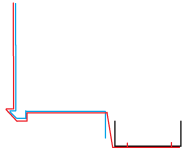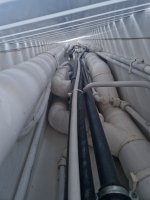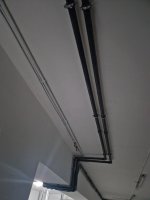Hi guys,
I wonder if someone could help me out with some advice. I had a pool installed a couple of years ago and added some solar pool heaters from arebos, as the pool is quite shaded. We have a very hot summer so I would have expected these to work very well, but I am struggling.
I have a 1.5hp pump and normally have 75% vac, 25% skimmer then leading to my inlets.
Without the heaters on, the pump is very comfortable at 10psi, but with 80% heaters, 20% inlets it is up at 18psi and the flow is visibly slow. If I reduce the valve to the heaters, no water goes to them and just goes to the pool. I believe the issue is here, in that the panels are on my flat roof (25 feet across, 28 feet up each run) so they require a lot of energy to run water through them. I've disconnected the panels and had the pipe on the roof just loop water back down and the issue is the same so I don't think its resistance in the panels.
Would a booster pump help in this case, and would it be placed after the filter prior to pumping water to the roof?
I wonder if someone could help me out with some advice. I had a pool installed a couple of years ago and added some solar pool heaters from arebos, as the pool is quite shaded. We have a very hot summer so I would have expected these to work very well, but I am struggling.
I have a 1.5hp pump and normally have 75% vac, 25% skimmer then leading to my inlets.
Without the heaters on, the pump is very comfortable at 10psi, but with 80% heaters, 20% inlets it is up at 18psi and the flow is visibly slow. If I reduce the valve to the heaters, no water goes to them and just goes to the pool. I believe the issue is here, in that the panels are on my flat roof (25 feet across, 28 feet up each run) so they require a lot of energy to run water through them. I've disconnected the panels and had the pipe on the roof just loop water back down and the issue is the same so I don't think its resistance in the panels.
Would a booster pump help in this case, and would it be placed after the filter prior to pumping water to the roof?













